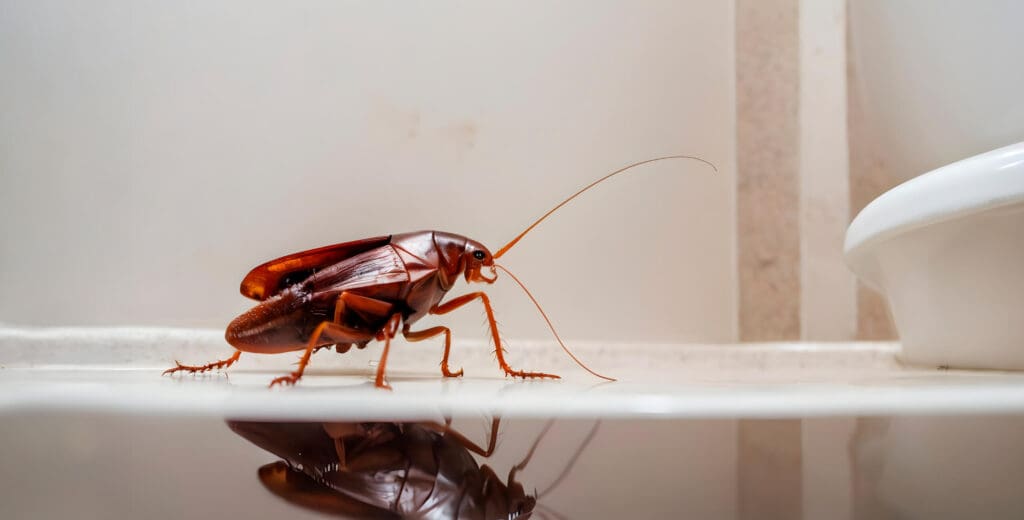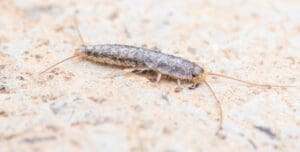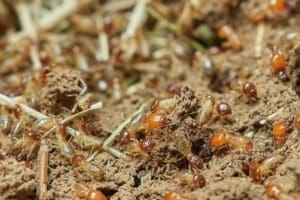

As fall approaches in Bergen County, preparing your property for seasonal pests is crucial. This article offers essential tips and strategies to safeguard your home or business against common fall invaders, ensuring a pest-free environment as temperatures drop and pests seek shelter indoors.
Fall Pests In Bergen County, NJ
In Bergen County, common fall pests include:
- Rodents (Mice and Rats): Small, with gray or brown fur, and long tails. They seek shelter in basements, attics, and wall voids, causing damage to insulation, wiring, and food supplies, and potentially spreading diseases.
- Spiders: Various sizes with eight legs and often large webs. They prefer dark, undisturbed areas like corners, basements, and attics, where they can trap insects but may also cause discomfort or fear.
- Cockroaches: Brown or black, with a flattened body and long antennae. They invade kitchens and bathrooms, thriving in warm, moist environments, and can contaminate food and surfaces.
- Ants: Small, with segmented bodies and varying colors. They enter homes and businesses in search of food and moisture, especially during fall when they are preparing for winter.
- Stink Bugs: Shield-shaped, brown or green insects with a distinctive odor when disturbed. They invade homes to seek warmth, often clustering in attics or walls, and can be a nuisance. Their feeding habits tend to damage or kill plants.
- Spotted lanternflies: Colorful with pink wings and black spots. They infest trees, plants, and outdoor structures, feeding on sap, which can weaken plants and cause significant agricultural damage.
- Termites: Small, pale insects with soft bodies and straight antennae. They live in wooden structures, feeding on cellulose, and can cause extensive damage to wood and buildings through continuous consumption.
Signs of Pest Activity
Common signs of fall pest activity include droppings and gnaw marks from rodents, often found in attics or basements. Spiders may be visible in webs located in corners or around windows. You can identify cockroaches by their egg cases, droppings, and a strong, musty odor, typically present in kitchens and bathrooms. Ants may form trails leading to food or moisture sources. Stink bugs often emit an unpleasant odor and cluster around windows or entry points. Termites can cause noticeable damage to wood, with signs including mud tubes on foundations and hollow-sounding wood.
Inspecting Your Property for Potential Pest Attractants: What to Look for and Where
Before you begin pest-proofing your home or business, conduct a thorough inspection of your property from top to bottom, looking for potential pest attractants and entry points, and make a comprehensive list of everything that needs to be fixed in order to avoid attracting pests. During your inspection, you should also keep an eye out for any of the previously mentioned signs of pest activity. To thoroughly inspect a property, start with the roof, checking for gaps around vents and chimneys. Examine exterior walls for cracks and openings around windows and doors. Inspect the foundation for holes or gaps. Inside, look at basements and crawl spaces for cracks and moisture, which attract pests. Check the kitchen and pantry for unsealed food and spills. Examine plumbing and wiring entry points for gaps. Outside, ensure garbage is stored in sealed containers and keep landscaping trimmed and debris-free. Look for clutter in storage areas, which can provide hiding spots for pests.
How To Protect Your Property Against Fall Pests
Once you’ve compiled your list, take the following steps to pest-proof your property for the Fall:
Seal Pest Entry Points
To keep pests out, seal cracks and gaps around the property effectively. Use caulk or weatherstripping to seal gaps around windows, doors, and frames. Apply steel wool or expandable foam to fill larger cracks in the foundation and exterior walls. Install door sweeps on exterior doors to eliminate gaps underneath. Inspect and repair screens on windows and vents. Ensure that utility entry points, such as around pipes and cables, are tightly sealed with appropriate materials like caulking or wire mesh, depending on the size of the gap. For the roof, check and repair any gaps around chimneys, vents, and soffits, and install covers on all chimneys. Regularly inspect these areas to ensure all gaps stay sealed.
Clean Up The Yard
To avoid attracting Fall pests outdoors, maintain a clean and well-landscaped outdoor area. Move firewood at least 20 feet from the house and elevate it off the ground to deter rodents and insects. Trim vegetation, shrubs, and tree branches away from the property to eliminate bridges for pests like rodents who are looking for a winter home. Regularly remove debris, such as leaves and grass clippings, which can harbor pests. Ensure proper drainage to prevent standing water, a breeding ground for mosquitoes. Keep outdoor garbage cans sealed and store them away from the house, ensuring they are cleaned regularly to avoid attracting pests. Seal any outdoor storage areas to prevent pest access.
Keep Indoor Spaces Clean
To avoid attracting Fall pests indoors, focus on comprehensive cleanliness. Regularly vacuum and dust to remove crumbs, dust, and spider webs, paying attention to corners, under furniture, and behind appliances. Clean kitchen counters, floors, and pantry shelves to eliminate food residues. Store food in airtight containers and promptly clean up spills. Reduce clutter in basements, attics, and storage areas to minimize hiding spots for pests. Ensure trash is disposed of regularly and bins are kept clean. Regularly inspect and clean less-used areas like basements and attics to detect and prevent pest activity early on.
Remove Attractants
Use dehumidifiers to reduce moisture, particularly in basements and crawl spaces, as many pests thrive in damp environments. Prevent clothes moths and paper pests by storing paper products, clothing, and other cellulose or natural materials in airtight containers made of a hard material like plastic, wood, or metal. Outdoors, replace standard light bulbs with yellow or sodium vapor bulbs to reduce insect attraction. Consider aerating ornamental pools or stocking them with fish to deter water-breeding pests like mosquitoes. Paint or treat any unfinished wood both indoors and out, as unfinished wood is a major attractor for pests like termites, carpenter ants, and carpenter bees.
Use Repellents
Use natural repellents like peppermint or eucalyptus essential oils around entry points, windows, and baseboards. Plant pest-repelling herbs like lavender and mint near entrances. Place dryer sheets in areas prone to rodents. Utilize sonic devices near kitchens and basements to deter pests with high-frequency sounds. Set traps in attics, basements, and along walls. If possible consider getting a dog or cat; their presence alone is enough to deter many rodents. Outdoors, apply diatomaceous earth around the building’s perimeter and in gardens. Create a barrier between the yard and any field or forest areas using gravel, mulch, or diatomaceous earth. Regularly refresh repellents to maintain their effectiveness.
Professional Pest Control
Finally, hiring a professional pest control company is the best way to guarantee a pest-free property year-round. Pest control experts have the knowledge to identify and address pest problems effectively, using advanced techniques and treatments that are not typically available to property owners. They offer seasonal visits to adjust strategies according to the changing pest patterns and environmental conditions, ensuring continuous protection. Additionally, professionals can detect and resolve hidden infestations early, preventing long-term damage and ensuring a thorough, proactive approach to pest management.

How Twin-Boro Can Help
With 50 years of experience in Bergen County, Twin-Boro is your top choice for effective pest management. We specialize in both residential and commercial pest control, utilizing Integrated Pest Management (IPM) techniques to ensure a thorough and environmentally responsible approach. Our tailored pest control plans address the unique needs of your property, focusing on prevention and long-term solutions. We guarantee our services, offering peace of mind that your home or business will remain pest-free all year. Trust our expertise and commitment to quality for reliable, effective pest control solutions. Contact us today to schedule a free inspection.






